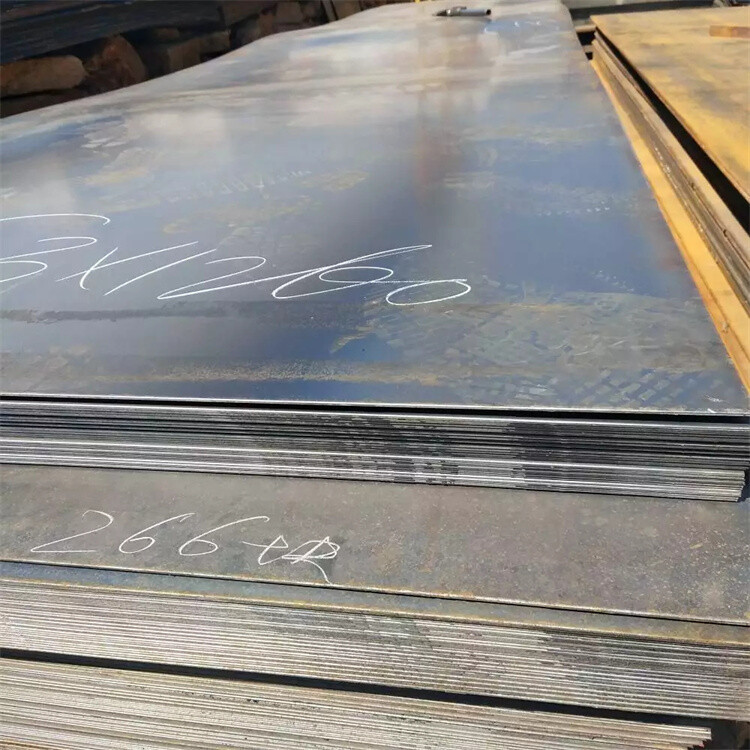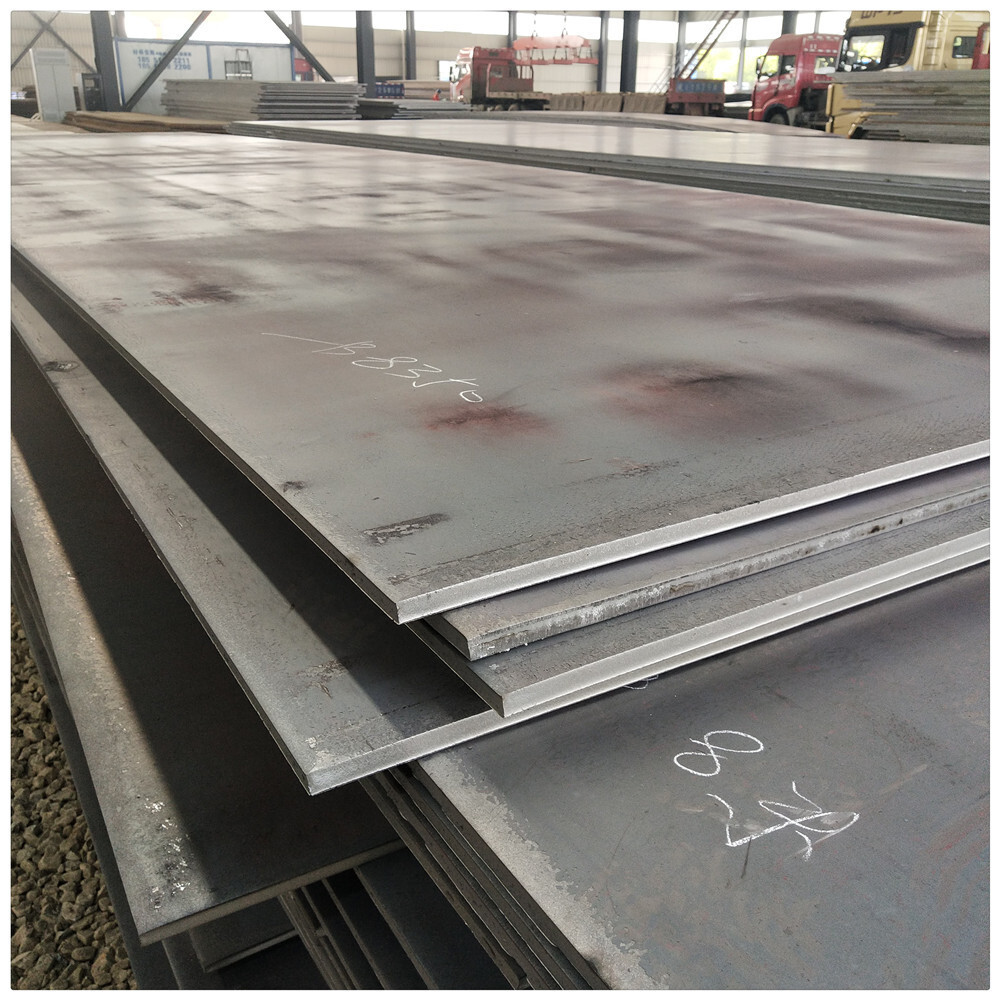(1)Key Alloying Elements:
Nickel (Ni): Approximately 0.4%–0.75%, significantly improving seawater corrosion resistance, especially effective in splash zones with alternating wet and dry conditions.
Copper (Cu): ≥0.5% (some standards specify 0.08%–0.11%), working synergistically with phosphorus to form a dense oxide film that slows down rust propagation.
Phosphorus (P): 0.08%–0.15%, inhibits loose rust formation on steel surfaces, enhancing corrosion resistance.
Other elements: Carbon (C ≤0.22%), Silicon (Si ≤0.10%), Manganese (Mn 0.60%–0.90%) balance strength and toughness.
(2)Standards:
Current standard: ASTM A690/A690M-24, which specifies H-piles and sheet piles for marine environments emphasizing long-term durability.

2. Mechanical Properties and Corrosion Resistance
(1)Mechanical Performance:
Room temperature yield strength ≥345 MPa, tensile strength ≥485 MPa, elongation ≥21%, combining high strength with impact toughness.
High-temperature stability: Impact energy absorption ≥27 J at 0°C within -20°C to 150°C, suitable for cold marine regions.
(2)Corrosion Resistance Advantages:
In marine splash zones, corrosion rate is only 1/2 to 1/3 that of ordinary carbon steel, extending service life 2–3 times under salty mist or rain wash.
Corrosion mechanism: Copper, phosphorus, and nickel synergistically form a strongly adherent copper oxide layer (e.g., Cu₂O) on the steel surface that blocks chloride ion penetration and inhibits pitting and stress corrosion cracking.
3. Application Areas
(1)Core Marine Engineering Uses:
Permanent structures: quay retaining walls, seawalls, breakwaters, replacing traditional carbon steel to reduce maintenance costs.
Temporary supports: retaining structures in excavation pits, where corrosion resistance reduces frequent replacements.
(2)Specialized Applications:
Bridge foundations: piles for cross-sea bridges.
Environmental engineering: landfill liners resisting chemically aggressive leachates.
4. Processing and Welding Techniques
(1)Production Key Points:
Melting and rolling use electric or converter furnaces; strict control of sulfur (≤0.015%) and phosphorus; hot rolling at 850–1050°C ensures grain refinement.
Surface treatment options include hot-dip galvanizing or anti-corrosion coatings (e.g., epoxy paint) to further enhance corrosion resistance for extreme marine environments.
(2)Welding Requirements:
Recommended welding methods: low-hydrogen electrodes (E7018) or gas-shielded welding (MIG/TIG) to avoid weld brittleness.
Process parameters: preheat at 100–150°C to reduce cold cracking risk; use nickel-copper welding wire (e.g., ERNiCu-7) for matching corrosion resistance; post-weld heat treatment at 200–300°C for 1 hour to relieve residual stress.
5. Market Dynamics and Cost Analysis
(1)Price and Supply:
Market price (2025) approximately $460–560/ton for steel sheet piles, heavily influenced by nickel price fluctuations, roughly 2–3 times the cost of ordinary carbon steel.
Suppliers: International brands like SSAB, ArcelorMittal, and domestic producers such as Baosteel and Ansteel offer customizable products.
(2)Comparison with Alternative Materials:
ASTM A690
Seawater Corrosion:Excellent (splash zone)
Cost:Medium (2–3x carbon steel)
Typical Uses:Piles, temporary supports
Ordinary Carbon Steel
Seawater Corrosion:Poor
Cost:Low
Typical Uses:General construction
Stainless Steel 316L
Seawater Corrosion:Excellent (fully immersed)
Cost:High (8–10x carbon steel)
Typical Uses:Chemical equipment, full seawater immersion
6. Technical Challenges and Solutions
(1)Weld Cracking Risk:
Cause: High phosphorus content can cause weld heat cracks.
Solution: Strictly control welding heat input (≤1.5 kJ/mm) and use multi-layer welding to disperse stress.
(2)Cold Work Hardening:
Phenomenon: Hardening layer may develop during bending or stamping, reducing toughness.
Remedy: Stress-relief annealing at 600–650°C after cold working to restore ductility.

7. Summary
ASTM A690 balances corrosion resistance and cost-effectiveness through synergistic alloying of nickel, copper, and phosphorus. Its key advantages include:
Outstanding corrosion resistance—splash zone resistance is 2–3 times that of carbon steel, ideal for long-term seawater exposure.
Combined strength and toughness—yield strength ≥345 MPa, elongation ≥21%, meeting complex loading requirements.
Excellent processing adaptability—compatible with conventional welding and cold forming; surface treatments further boost performance.
Selection advice:
For marine projects balancing cost and corrosion resistance, ASTM A690 is the preferred choice; for fully immersed or highly corrosive environments, stainless steel or higher-grade nickel alloys should be considered. With proper design and process control, ASTM A690 can significantly extend the service life of marine structures and reduce lifecycle costs.
8. About Suzhou Bolaibao Metal
Suzhou Bolaibao Metal is a leading supplier specializing in high-performance industrial metal materials. We are committed to providing premium alloy steels, stainless steels, nickel-based alloys, and marine-grade metals for marine engineering, bridge construction, and other demanding corrosive environments.
Our well-established supply chain and technical expertise allow us to customize ASTM A690 compliant high-strength, corrosion-resistant steel to ensure maximum structural safety and economic efficiency for our clients’ projects.
From material selection and processing guidance to welding technical support, the Bolaibao team offers professional and trustworthy comprehensive services, helping your projects remain stable and durable in harsh environments.
Contact us for more product information and customization options.
Phone: +86 15366282159
Email: sale@bolaibao1.com
Website: www.blbszmetal.com
Get real-time quotes
Interested? Leave your contact details.
